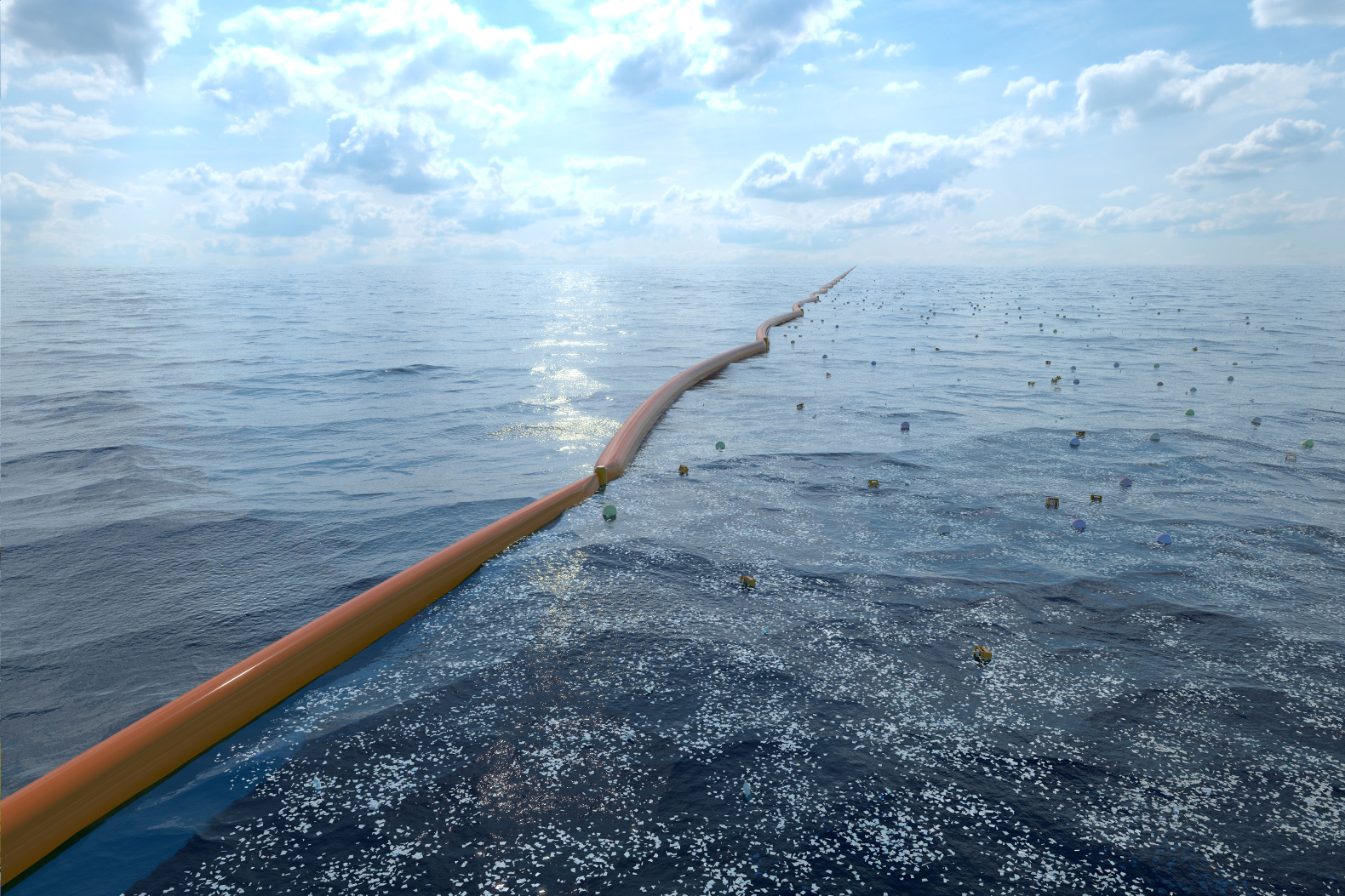
Rendered image of ocean cleanup array
The Great Pacific Garbage Patch contains even more trash than we thought.
Boyan Slat, a young Dutch inventor intent on cleaning up our oceans became famous recently when he developed a passive system to help remove up to 5 trillion pieces of plastic trash that litter our seas.
His Ocean Cleanup project just completed its first aerial reconnaissance of the Great Garbage Patch – a soupy collection of plastic debris said to be larger than the state of Texas – which currently devastates the ocean’s ecosystems. The results were startling. Slat says the problem is much worse than any of us thought.

via wastedive
At a press conference in Mountain View, California, Slat said that he and his crew observed over 1,000 large pieces of plastic debris in just two hours.

Ocean plastic wad in the Great Pacific Garbage Patch, via inhabitat.
He said that this initial finding, of so many pieces of plastic between .5 and 1.5 meters confirms that plastic debris is absolutely choking ocean life.
“One of the things that we are already able to share is right at the edge of [the Great Pacific Garbage Patch], we came across more objects than we were expecting to find in the center of the garbage patch,” Slat said.

Marine Debris, photo by NOAA
The Great Pacific Garbage Patch, also known as the Pacific trash vortex, spans waters from the West Coast of North America to Japan. It is actually made up of the Western Garbage Patch, located near Japan, and the Eastern Garbage Patch, located between the U.S. states of Hawaii and California. Where warm water meets cooler water, there are swirls of debris that researchers have known were problematic for some time, but Ocean Cleanup details a larger problem for several reasons.

Great Pacific Garbage Patch
Firstly, the larger pieces of plastic that are easily spotted from a plane don’t account for many smaller pieces that are still viewable to the naked eye, but that could be in multiple layers of the ocean, not just floating on its surface.
Secondly, the larger pieces of plastic break up into ever smaller pieces until they are microscopic, ending up in the digestive tracts of animals as large as whales, and as small as tiny shrimp and plankton. Zooplankton have been filmed eating plastic bits, and several whales recently washed up on shore with large pieces of plastic trash in their bellies. From the biggest to the smallest creatures, they’re choking on our trash.
Slat’s Ocean Cleanup Array purportedly could remove 7,250,000 tons of this plastic trash from our oceans. Although the project has seen its detractors, it is one of the only proposals which could remove so much trash on such a large scale to date. Slat’s Mega Expedition was successful in mapping the plastic in the Great Garbage Patch last year but fell short of discovering just how much there really was.
“We discovered that the conventional method of measuring ocean plastic, using nets of less than a meter (3 ft) wide, was inaccurate because it seriously underestimated the total amount of plastic. The reason for this is simple: the larger the objects, the rarer they are by count,” the Ocean Cleanup team revealed.
Sadly, just five countries create most of the plastic trash in the Great Garbage Patch. You can guess who are among them.
Images: wastedive, inhabitat
Source: The Mind Unleashed













The price will be based on the amount of junk and type of materials to be removed. Furthermore, applicable fees should be included in the estimate, so there are no surprises down the line. junk removal
ReplyDeleteI have read through the post and I agree with your comments, I hope you have many good posts so do not share, thank you.
ReplyDeleteusps tracking
Yeah! Junk cleanup regularly is a must. But it can be done wisely to save a little extra money. You can keep your old upholstery furniture to reuse them after reupholstering them from the professionals. upholstery supplies maryland
ReplyDeletewatch live streaming of fifa world cup 2019
ReplyDelete